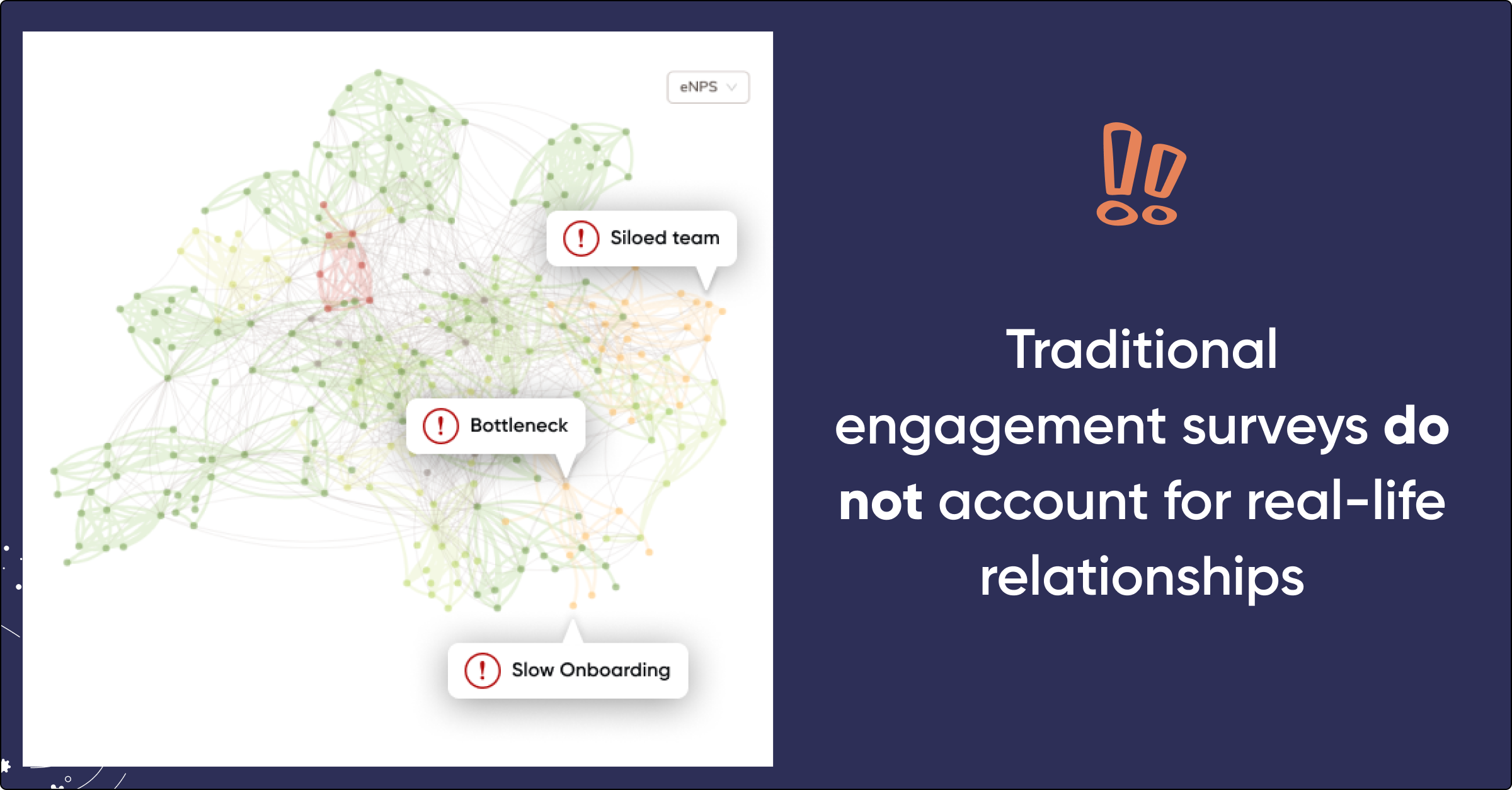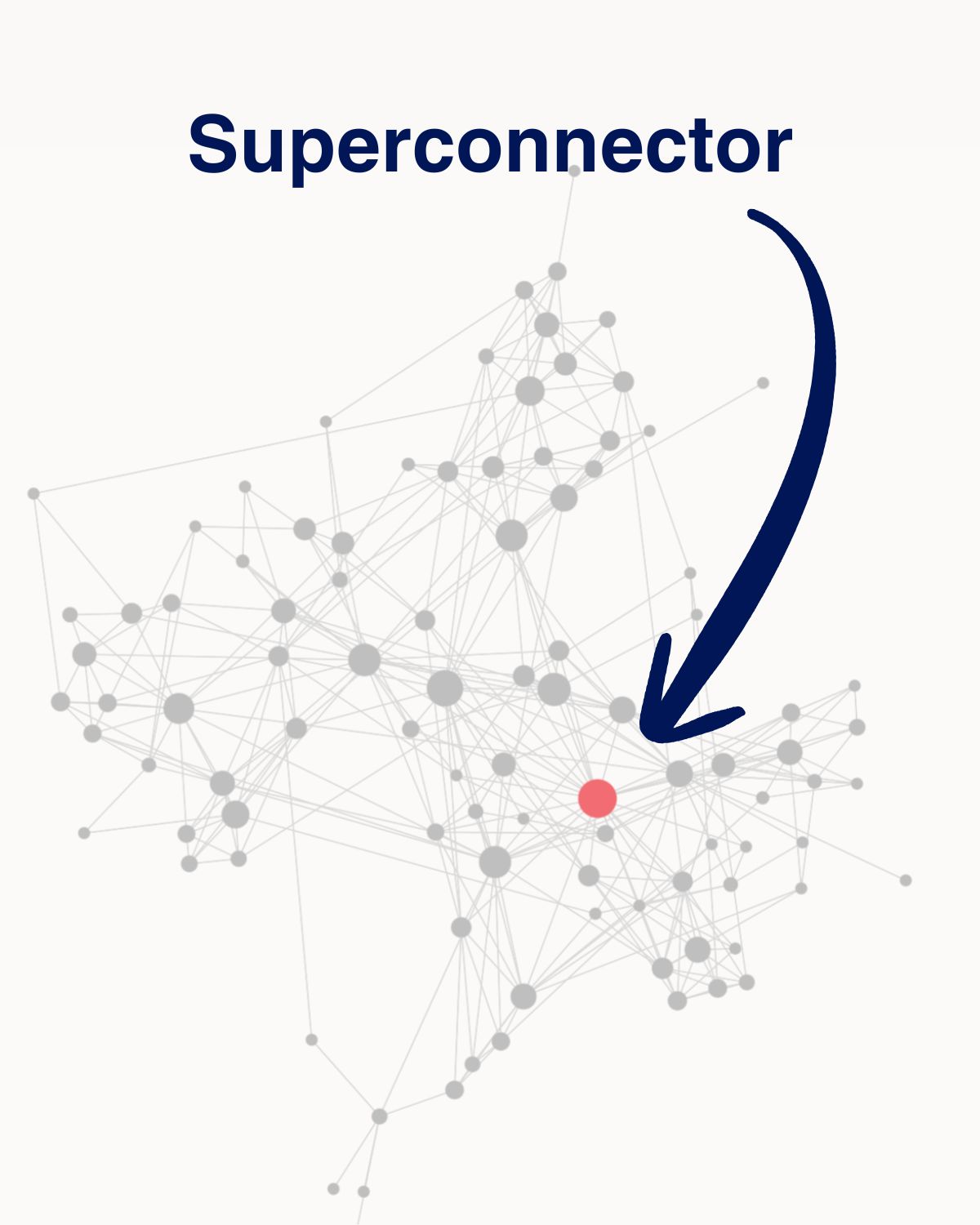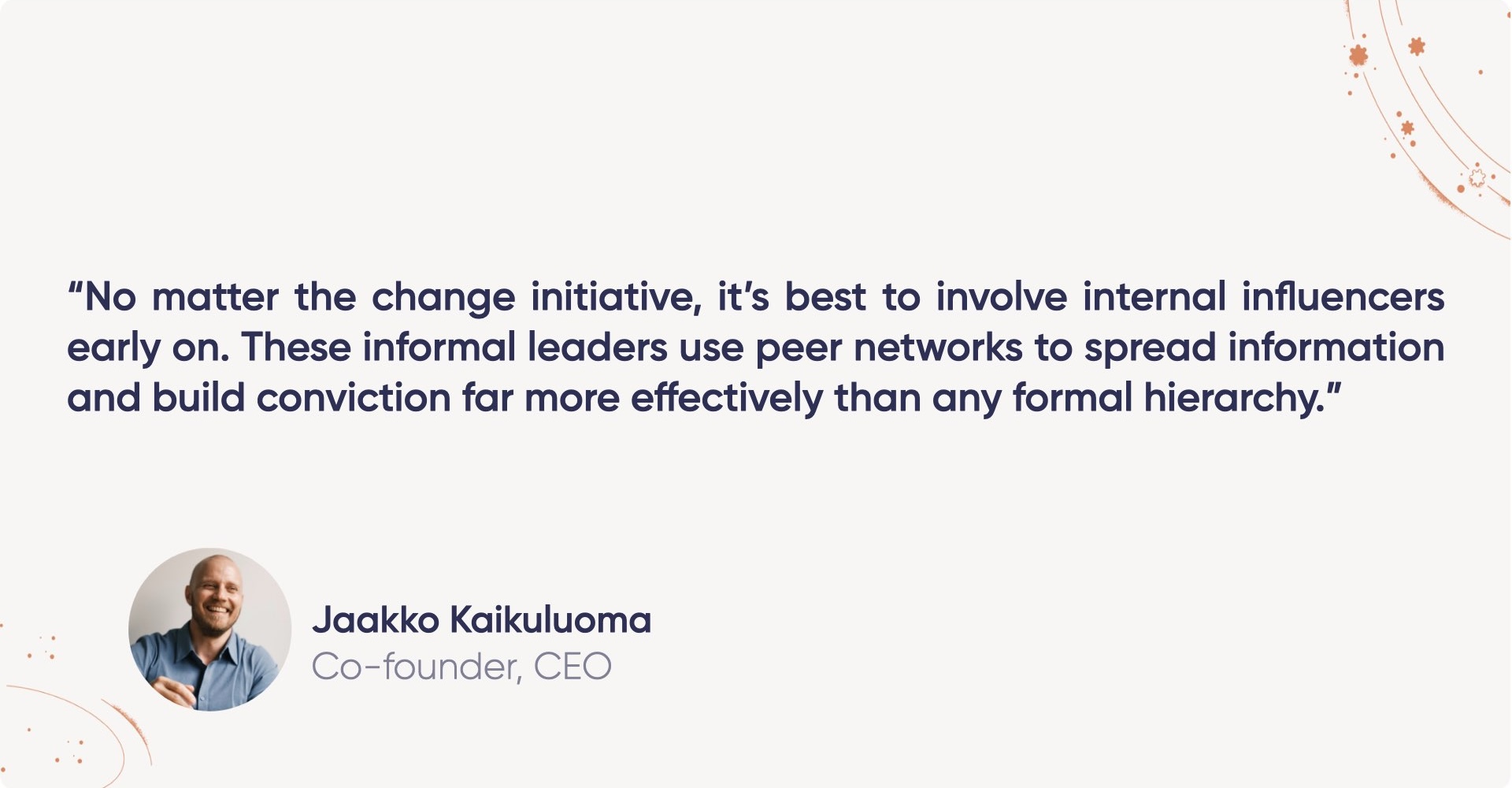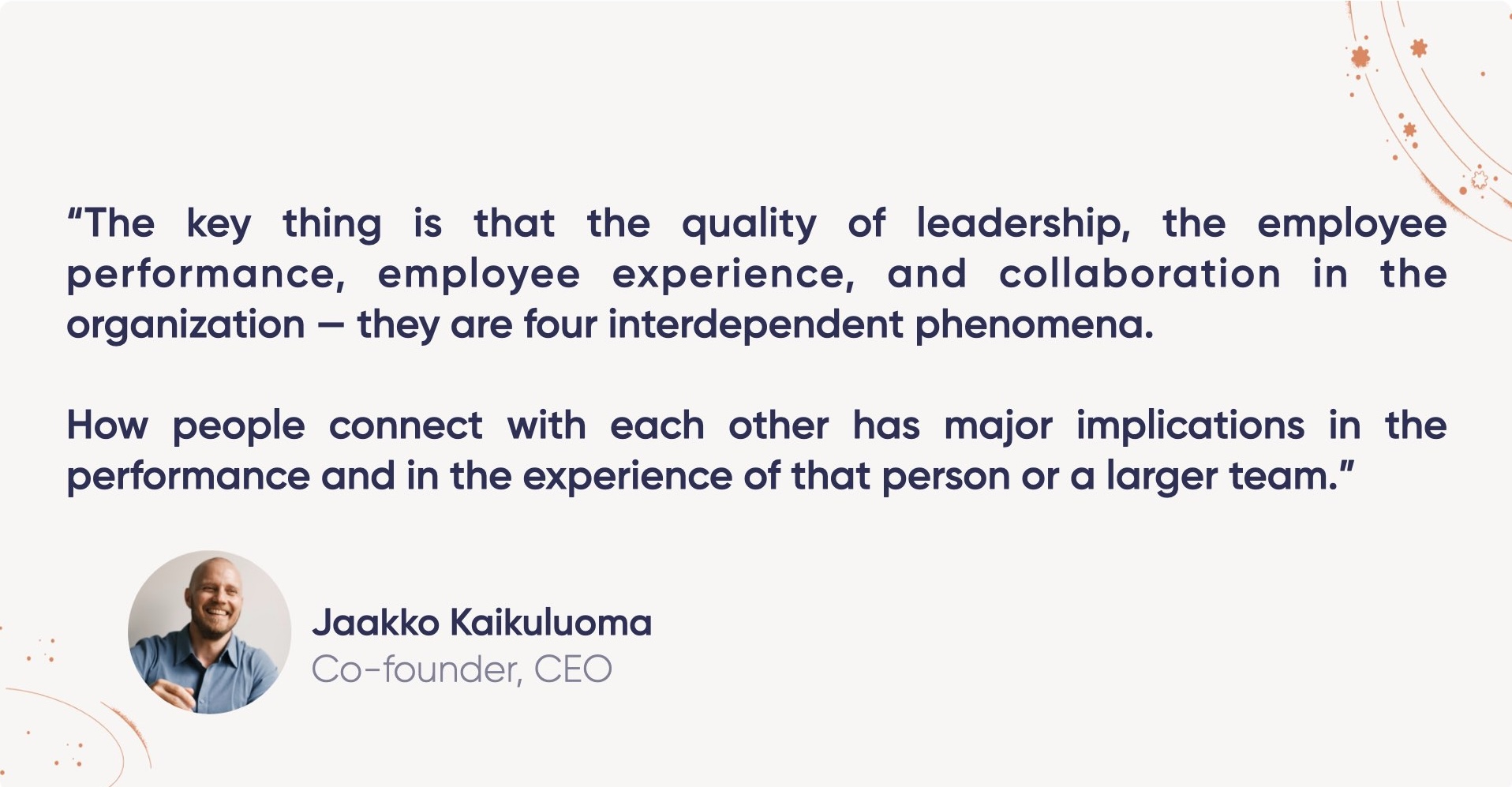Change Management Plan Template: Modern Network-Based Approach for 2026
October 1, 2025In business, change is constant. For growing companies, effective change management can drive real progress. But to unlock that potential, you need a different mindset about how change should be led.
In business, change is constant. For growing companies, effective change management can drive real progress. But to unlock that potential, you need a different mindset about how change should be led.
A strong change management plan relies on trust and communication between people, not only on formal steps and deadlines. Real transformation happens through trusted networks, not just organizational charts. Research by Teamspective shows that 3% of employees, the “superconnectors”, influence up to 85% of the organization.
If you want to approach change management with confidence, the template below will help. It blends structured planning with network insights so you can find the right influencers and create momentum for lasting transformation.
What is a Change Management Plan?
A change management plan is a roadmap that guides an organization from its current state to a future state. It outlines what needs to happen, who is responsible, and how it will be done.
Traditionally, change management plans focused almost exclusively on steps and timelines. Modern plans flip that script and focus on people, because change is ultimately social.
The most effective plans use both structure and network analysis. They identify informal influencers who can speed up adoption and help overcome resistance.
Discover Your Hidden Networks
Understand how work really gets done and who are the key influences in your organization.
Change Management Plan Template
The template below outlines the key components you need to consider when leading change.
1. What Are the Goals and Objectives?
A good change management plan starts by defining clear goals.
Primary Goal: What success looks like in measurable terms.
Secondary Goals: Supporting objectives that contribute to the main goal.
Success Metrics (KPIs):
- Quantitative: adoption rates, performance metrics.
- Qualitative: employee sentiment, feedback to leadership.
2. What Is the Background and Context?
Understanding the starting point helps set realistic expectations.
Current State: Document the existing situation, including pain points and opportunities.
Drivers for Change: Explain why change is necessary now. Connect to business objectives and external pressures.
Change Readiness: Assess organizational appetite for change based on past experiences and current workload.
3. What Is the Scope of Change?
Clarify what’s changing and what’s not.
What’s Changing: Define which processes, systems, or behaviors will shift.
What’s Not Changing: Clarify what will remain the same to reduce anxiety.
Impact Assessment: Show which departments, roles, or individuals will feel the biggest impact.
4. Who Is on the Change Management Team?
The right mix of formal leaders and informal influencers is essential.
Executive Sponsor: Senior leader accountable for success.
Project Manager: Coordinates daily activities.
Superconnectors: The 3% of employees with the strongest networks. They’re your internal influencers who can reach 75–85% of the organization.
Subject Matter Experts: Specialists who understand the details of the change.
Change Champions: Volunteers from across the business who help encourage adoption.
Frameworks like RACI (responsible, accountable, consulted, informed) are useful tools for further clarifying the role and expectations of each stakeholder.
5. How Do You Analyze Stakeholders?
Stakeholder mapping ensures resources go where they matter most
| Influence/Impact | Stakeholder Group | Engagement Strategy |
|---|---|---|
| High/High | Superconnectors, key decision makers | Invest heavily in buy-in |
| High/Low | Senior leaders | Keep informed and aligned |
| Low/High | Frontline employees | Address concerns directly |
| Low/Low | General workforce | Communicate clearly, minimal resources |
6. What Is the Communication Plan?
Communication should be clear, timely, and trusted.
Key Messages: Core points explaining why change matters and what employees gain. If needed, tailor the messages to different target groups to explain what makes this change relevant for them.
Communication Channels: Use a mix of formal channels (emails, town halls) and informal ones (peer networks, team discussions).
Timing: Share updates in sequence. Start with superconnectors, then cascade through networks.
Feedback Loops: Allow employees to ask questions and raise concerns.
7. What Is the Implementation Timeline?
Structure the rollout in phases.
- Phase 1 – Foundation: Engage superconnectors and build a coalition.
- Phase 2 – Pilot: Test changes with early adopters.
- Phase 3 – Rollout: Scale proven approaches across the organization.
- Phase 4 – Embed: Reinforce change through monitoring and measurement.
Milestones: Set checkpoints to track progress and make adjustments.
8. How Do You Manage Risks?
Identify risks early and plan mitigation strategies.
People Risks: Resistance, burnout, skill gaps, or staff turnover.
Process Risks: Workflow disruptions, integration issues, quality concerns.
Technology Risks: System failures, migration problems, adoption challenges.
Mitigation Strategies: Define steps to prevent or reduce each risk.
9. How Do You Measure Success?
Track both early and long-term signals.
Leading Indicators: Early signals like engagement scores, participation rates, and changes in how employees or teams collaborate.
Lagging Indicators: Final outcomes such as improved performance or business results.
Review Cycles: Regular check-ins to adjust strategies as needed.
Feedback Collection: Use surveys, focus groups, and informal talks to capture sentiment.
Running Change Management: Traditional vs. Modern Approaches
Change management has evolved. Traditional methods rely on formal hierarchies and top-down communication, while modern approaches work through informal networks and trusted relationships.

Traditional Approach: Leading Change Through Formal Hierarchies
Most organizations still run change only through formal reporting lines. Executives announce changes, managers pass them along, and employees are expected to follow.
This assumes authority equals influence. Communication is treated as one-way. Resistance is seen as disobedience instead of feedback.
The flaws are clear. Information gets diluted as it moves down. Managers may not fully support the change. By the time it reaches employees, details are often lost.
This leads to confusion, slower adoption, and frustration. Employees feel change is happening to them, not with them, resulting in higher failure rates.
Modern Approach: Leading Change by Engaging Superconnectors
Research by Teamspective shows that engaging the 3% of employees who have the most connections and influence helps reach 75–85% of the organization quickly.
Superconnectors are your company’s internal influencers. These aren’t necessarily senior leaders. They’re trusted colleagues, senior employees, social butterflies, and go-getters who bridge departments and groups. When they share information, people listen.

I’ve seen this play out in a consulting firm with two distinct employee groups: software engineers and designers. The company had been experiencing high turnover and declining engagement scores among their design team. Management was puzzled because they’d been investing heavily in employee development and benefits.
The analysis revealed that management had placed all their focus on software engineers, which made designers completely isolated from leadership. They felt invisible, undervalued, and cut off from the company’s direction.
The traditional response would have been more manager training, policy changes, or additional benefits. Instead, we identified the superconnectors who naturally bridged both groups. We equipped them with context about why both roles mattered to company success and gave them early insight into strategic decisions that affected designers.
Within months, engagement scores improved and turnover decreased. The informal influencers did what the formal hierarchy couldn’t. They rebuilt trust and connection across the organization.

When you work through networks, adoption is faster and more sustainable. People often trust colleagues more than management, and they are more open to change when peers endorse it.
How Organizational Network Analysis Can Help
Organizational Network Analysis (ONA) makes invisible relationships visible. It maps who connects, where information flows, and where it gets blocked.
When used for change management, ONA reveals:
- Superconnectors: The 3% with high connectivity and influence. Engaging them moves the whole network.
- Bottlenecks: People who control information between groups. Without their support, communication stalls.
- Isolated Groups: Teams with few connections who risk being left out.
- Cross-Functional Bridges: Individuals who connect departments and keep collaboration alive.
ONA is fast and cost-effective. With modern tools, you can map networks through existing platforms like Slack, Teams, or email.
ONA becomes stronger when combined with other data. Performance reviews show struggles, while engagement surveys reveal sentiment. Overlaying these insights helps leaders act quickly and adjust their change management initiatives proactively.

The Benefits of Running Change Management the Right Way
The data shows clear advantages when you align change efforts with how people actually connect and collaborate.
Faster Adoption
When you work through superconnectors, change happens 40% faster than traditional top-down approaches. Information spreads naturally through trusted relationships rather than being forced through formal channels.
Higher Success Rates
Network-based change initiatives see better adoption rates. People are more willing to try new approaches when trusted colleagues recommend them.
Reduced Resistance
Most resistance comes from fear and misunderstanding. When people hear about changes from trusted sources, they’re more likely to ask questions rather than resist.
Better Employee Experience
People feel more heard and valued when change acknowledges their existing relationships and influence patterns. This builds trust for future initiatives.
Sustained Change
Changes that flow through natural networks stick better than those imposed through hierarchy. People continue behaviors that their trusted colleagues model and reinforce.
Conclusion
Your next change initiative doesn’t have to follow the same predictable path as the last one. Every organization has untapped networks of influence that can accelerate transformation when properly identified and engaged.
Most leaders already know change is hard. What they don’t realize is that it doesn’t have to be slow. When you identify your superconnectors and equip them properly, you’re orchestrating change through the people who have the most impact on your organization.
The template and insights in this guide give you a practical starting point. But remember that every organization’s network is unique. The only way to truly understand your influence patterns is to map them, measure them, and use them strategically.
Ready to see how ONA can improve your change management initiatives? Schedule a call with our team of professionals and get your targeted insights.



